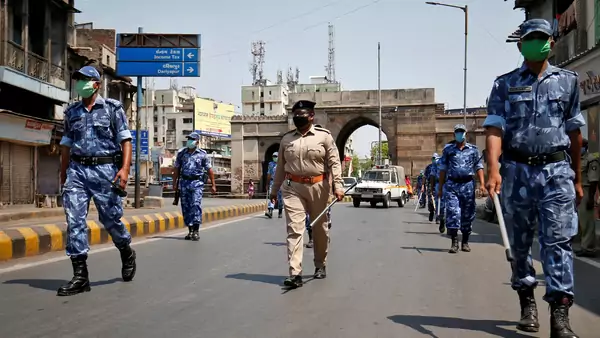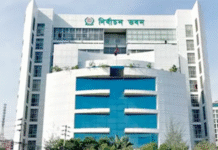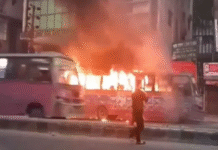As Modi, Khan, Hasina, and other leaders tackle COVID-19 (coronavirus) by prolonging national shutdowns, economic forecasts indicate a rocky year ahead for South Asia.
April 15, 2020 Council of Foreign Affairs

As Modi, Khan, Hasina, and other leaders tackle COVID-19 by prolonging national shutdowns, economic forecasts indicate a rocky year ahead for South Asia.
The regional perspective: An April 12 World Bank report on South Asia’s economies revised its regional GDP growth forecast for 2020 from 6.3 percent to between 1.8 and 2.8 percent. A slowdown of that magnitude would be South Asia’s worst annual economic performance in forty years. The report also warns that the pandemic will exacerbate inequality and disproportionately impact the poor. The World Bank plans on quickly spending over $1.5 billion on emergency response and health care in South Asia, including $1 billion in India alone. The International Monetary Fund approved debt service relief for twenty-five vulnerable countries, two of which—Afghanistan and Nepal—are in South Asia.
Throughout South Asia, concerns persist that even aggressive government actions are insufficient. Many people lack consistent access to water and soap, space for social distancing, and health care access. Wide swathes of the population are out of work—including millions of South Asian migrant workers abroad, laid off from construction and other guest-worker employment in the Persian Gulf. Historically the Gulf countries have been among the top sources of remittances to South Asia.
Modi extends shutdown to May: In a widely expected announcement on the day originally intended to end India’s twenty-one-day lockdown, Prime Minister Narendra Modi declared on April 14 that India’s lockdown will be extended to May 3. However, certain businesses in areas assessed as low-risk will be allowed to resume activity beginning on April 20. The Congress party criticized Modi’s announcement as offering “no concrete item” for the poor.
The Indian Council of Medical Research estimated that the number of cases would have reached 820,000 by mid-April without the lockdown. Instead, India’s total number of cases is just under twelve thousand, including 392 deaths. COVID-19 testing has increased to over sixteen thousand tests per day. The Supreme Court initially ruled that private laboratories must provide tests for free, but it partially reversed its position after laboratories threatened to stop testing altogether. In recent days, dense neighborhoods in Delhi and Mumbai, the capital of Maharashtra, emerged as the country’s hotspots, with caseloads growing in the triple digits daily. Maharashtra has suffered around half of the country’s COVID-19 deaths. Meanwhile, the state of Kerala has seemingly managed to “flatten the curve.”
Concerns about anti-Muslim rhetoric and scapegoating by the media have increased after an Islamic organization hosted a large conference in Delhi last month, leading to COVID-19 transmission that attracted a disproportionate amount of attention in India.
Finally, the World Bank lowered its economic growth forecast for India’s current fiscal year to between 1.5 and 2.8 percent. Economic discontentment is already surfacing. Hundreds of unemployed migrants seeking passage to their home villages have gathered in the cities of Surat and Mumbai, in protest or in hope that travel will soon resume.
Tensions grow as Pakistan anticipates gradual reopening: Prime Minister Imran Khan informed Pakistan on April 14 that public gatherings, including schools, will continue to be banned for two weeks. Certain industries will reopen in phases, although Khan will permit provincial governments, which have imposed their own lockdowns, to delay the move. Two days earlier, Pakistan’s interior ministry announced that borders will be shut for two more weeks. Pakistan has 5,988 cases as of April 15.
Observers fear that behind the scenes, Pakistan’s powerful military leaders are exerting greater influence over the Khan administration, since they wrested control over the countrywide lockdown from him. The lockdown has also become a politicized issue. The chief minister of Sindh province, a member of the opposition party who was the first provincial leader to ask for the military’s help, criticized the Khan administration’s response as too little, too late.
In Karachi, a mob of people seeking to hold a communal Friday prayer at a mosque attacked police officers on April 10. Under national guidelines, only five people can pray at a mosque at one time. The government closed off entrances and exits to eleven heavily afflicted neighborhoods in Karachi. Authorities launched a $900 million cash transfer program secured by biometric technology last week, part of Pakistan’s $7.2 billion relief package announced in late March. Twelve million families in need will each receive a little over $200. Pakistan is experimenting with virtual learning by launching “Teleschool,” a national television broadcast for school children intended to substitute for lost class time.
Cases surge in Bangladesh: According to the New York Times, cases in Bangladesh are doubling every 2.5 days, making the country’s caseload the fastest-rising in the world. Bangladesh’s national epidemiology institute announced 219 new cases on April 15, the largest daily increase yet. This brings the total case number to 1,231, a majority in Dhaka division. The health minister has finally admitted that “community transmission” is widespread in the country.
Prime Minister Sheikh Hasina announced a $1.7 billion relief package for farmers affected by the restrictions, part of a government stimulus worth $11.3 billion so far. The government extended the nationwide holiday again by eleven days until April 25. In Dhaka and Chattogram, garment workers have protested layoffs and wages withheld for three consecutive days. Authorities are preventing anyone from entering or exiting Cox’s Bazar, where nearby refugee camps house nearly one million Rohingya refugees. Although just one case has been confirmed in Cox’s Bazaar, experts fear transmission in the densely populated camps.
Unlikely allies join forces in Afghanistan: Afghanistan has 784 confirmed cases. Doctors and clerics are joining forces and traveling the country to tell people to stay at home. Even the Taliban has joined the effort against coronavirus. On April 10, the U.S. State Department welcomed the group’s public health campaign and its offer to provide safe passage to aid groups.
Nepal identifies more cases: Nepal’s cabinet decided to extend the nationwide lockdown again by twelve days on April 14, after cases rose to sixteen. International flights will be suspended and borders closed until May 1. Imported kits from China allowed the country to scale up testing in the last several days, turning up five cases on April 13 alone. The crisis has caused friction between ruling Nepal Communist Party leaders. Observers have criticized what they see as a lack of coordination among agencies and factions.
Strict measures in Sri Lanka: As of April 15, Sri Lanka has 235 confirmed cases of COVID-19. The growth of cases has slowed but so far failed to plateau. Sri Lanka has implemented strict restrictions, including a ban on travel between districts, a work-from-home policy until at least April 20, and a daily curfew in several “high risk” districts. A report from The Guardian finds Sri Lanka’s civil society organizations anxious about reconciliation and democracy during the Rajapaksa administration’s militarized lockdown, which has also temporarily suspended courts and parliamentary elections.
Ever cautious, Bhutan has no new cases in nearly two weeks: All three Bhutanese citizens who tested positive for coronavirus have been moved from hospitals to quarantine facilities. Even so, Bhutan imposed several new measures aimed at preventing an outbreak, including guidelines for businesses to close at 7:00 p.m. every day and for people not to gather in groups of three or more. Bhutan already mandates that its citizens who return from abroad or who were potentially exposed to the virus enter a 21-day quarantine, followed by a COVID-19 test.
The Maldives feels the economic pinch: A biannual World Bank report estimates that the Maldivian economy will take the greatest hit of any South Asian country this year, contracting between 8.5 and 13 percent, before rebounding to over 6 percent growth in 2021. The national revenue authority revealed that government revenue from taxes and tourism in March 2020 fell nearly 27% from March 2019. The Maldives currently has just three active cases; over three-quarters of the country’s cases have recovered.









